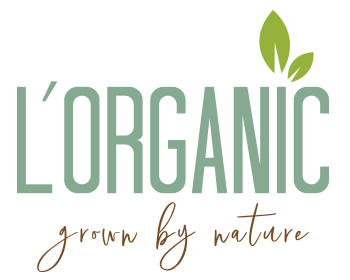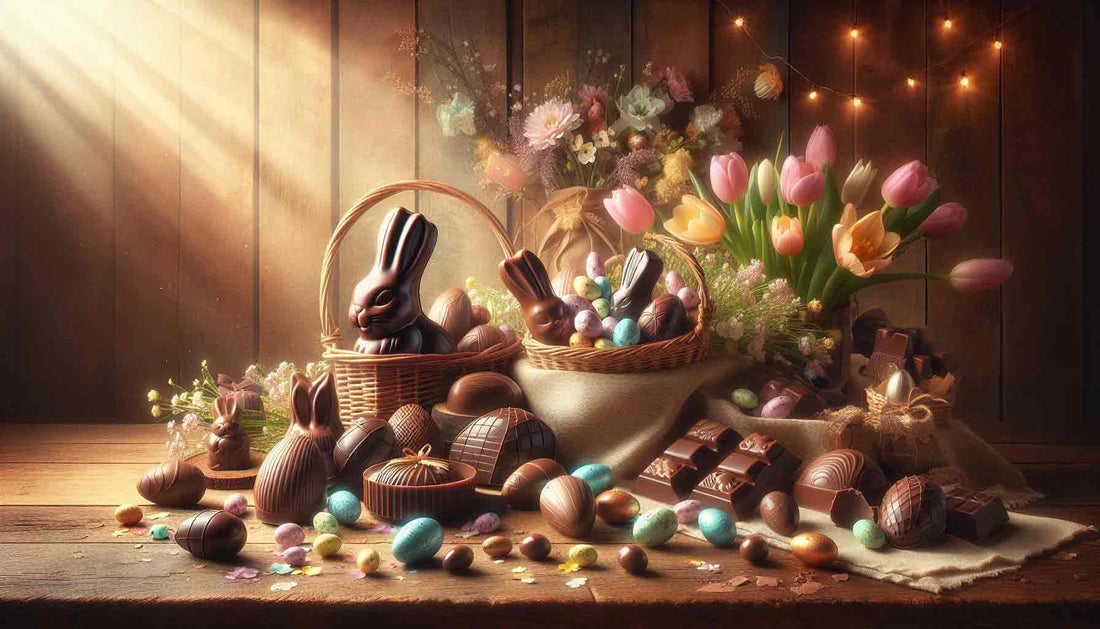Easter and chocolate go hand in hand, creating one of the most delightful traditions of the year. From intricately designed chocolate eggs to adorable chocolate bunnies, this sweet indulgence has become a symbol of celebration across Australia. But have you ever wondered why chocolate takes center stage during Easter? As chocolatiers and experts in crafting Easter treats, we’ve explored the fascinating history and cultural significance behind this delicious custom.
The tradition of chocolate at Easter blends ancient symbolism with modern creativity. Eggs, long seen as a representation of life and renewal, were once exchanged in springtime rituals. Over time, this evolved into the chocolate eggs we know and love today, thanks to advancements in chocolate-making. Now, Australians consume millions of Easter chocolates every year, making it a cherished part of the holiday. Let’s uncover the story behind this beloved tradition and why it continues to bring joy to so many.
The Origins Of Easter Traditions
Easter traditions blend ancient pagan rituals with Christian influences. This unique combination has shaped modern celebrations, including the beloved chocolate eggs that remain at the heart of the holiday.
The History Of Eggs As A Symbol
Eggs are among the oldest symbols of fertility and renewal. Decorated ostrich eggs found in southern Africa date back 60,000 years, highlighting their cultural significance. Pagan rituals often associated eggs with spring and the rebirth of nature. In early Christianity, eggs became symbols of Christ’s resurrection, representing new life. By the 17th century, Europeans dyed eggs in yellow, red, and other colors using natural materials like onion skins or beetroot. Red eggs, in particular, were believed to symbolize Christ's blood.
From Dyed Eggs To Chocolate Eggs
The transition from dyed eggs to chocolate eggs emerged with advancements in chocolate-making. In the 19th century, Swiss chocolatier Daniel Peter invented milk chocolate, making chocolate more accessible. By incorporating this innovation into Easter festivities, chocolate eggs quickly became holiday staples. Today, Australians cherish a variety of festive chocolate treats, from dark chocolate Easter eggs to vegan Easter chocolates. Modern Easter sweets include hollow eggs, creative shapes, and even handmade Easter chocolates packaged in gourmet Easter gift baskets. Each year, these Easter treats play a key role in traditional Easter chocolate hunts, bringing delight to all ages.
The Role Of Chocolate In Easter Celebrations
Chocolate's connection to Easter stems from centuries-old traditions that blend religious symbols, cultural practices, and innovations in confectionery. Over time, chocolate evolved into a central feature of Easter festivities, offering a variety of treats like chocolate eggs and bunnies that bring joy to celebrants of all ages.
The Rise Of Chocolate Eggs
Chocolate eggs became a celebrated Easter tradition during the 19th century when European chocolatiers pioneered their creation. Early chocolate eggs were crafted using dark chocolate, often handmade and filled with delectable surprises like pralines. The introduction of milk chocolate eggs, credited to Swiss innovations in 1875, brought a creamier texture and sweeter flavor that appealed to a larger audience, including children.
Australia embraced this trend, and chocolate eggs are now a favorite among Easter treats. From small organic Easter chocolates to intricately designed gourmet Easter chocolates, these eggs remain iconic symbols of renewal and festivity. Our love for these sweets combines their symbolic connection to ancient fertility rituals and their luxurious appeal as a holiday chocolate gift.
Industrialization And Mass Production
The industrial revolution transformed Easter chocolate into an accessible treat for everyone. By streamlining production, chocolatiers reduced costs while expanding their offerings. Factories produced a wide range of options, including milk chocolate eggs, hollow Easter bunnies, and other festive chocolate treats.
Today, Australians enjoy diversity in Easter chocolate, from vegan Easter chocolates to handmade Easter chocolates showcasing local craftsmanship. Industrialization further popularized the Easter chocolate hunt, encouraging families to create unforgettable holiday traditions. These advancements have extended to modern creations like Easter gift baskets filled with dark chocolate Easter delights and other holiday chocolate gifts, making Easter both a nostalgic and indulgent celebration.
Cultural And Religious Significance
Easter isn't just about the festivities—it carries deep cultural and religious roots that explain why we celebrate with chocolate eggs. Traditions blending Christian symbolism and ancient pagan practices symbolize renewal and joy, bridging spiritual meaning with indulgent celebrations.
Christianity And The Easter Egg
Within Christianity, eggs symbolize life and resurrection, aligning perfectly with the Easter story of Christ's rise. During the Middle Ages, Catholics prohibited eggs during Lent, making their return on Easter Sunday a symbol of festivity and abundance. Over time, this transformed into gifting decorated eggs, which later evolved into chocolate eggs, including today’s favorites like milk chocolate eggs and dark chocolate Easter variations.
The resurrection of Christ is often mirrored by cracking eggs, symbolizing new beginnings. Incorporating these traditions, Easter chocolate hunt activities have reimagined this religious practice into a fun, family-focused event in Australian homes and gardens, where children enjoy uncovering festive chocolate treats.
Pagan Roots And Fertility Symbols
Pagan festivals pre-dating Christianity celebrated seasonal changes with symbols of fertility such as eggs and rabbits. These elements seamlessly transitioned into Easter traditions, representing renewal and the cycle of life, aligning with springtime themes. The Easter bunny, originally a fertility symbol, became a whimsical figure delivering treats like Easter bunny chocolate.
Australia’s Easter traditions now incorporate these roots, adding a modern twist with holiday chocolate gifts like handmade Easter chocolates and organic Easter chocolate. Whether purchasing gourmet Easter chocolates for loved ones or assembling Easter gift baskets, the cultural significance of these symbols remains strong, bridging ancient practices with today’s celebrations.
Modern Easter Chocolate Trends
Modern Easter celebrations in Australia spotlight evolving chocolate traditions, from creative Easter chocolate hunts to an array of Easter gift options that cater to diverse preferences.
Chocolate Consumption During Easter
Australians consume large quantities of chocolate during Easter, with chocolate eggs and Easter bunny chocolates being the centerpieces of celebration. Every year, shelves are stocked with milk chocolate eggs, dark chocolate Easter varieties, and festive chocolate treats tailored to suit every palate. Gourmet Easter chocolates and handmade Easter chocolates hold a special place for those seeking artistry and flavor, while vegan Easter chocolate and organic Easter chocolate appeal to more conscious consumers. The growing popularity of these options reflects a broader awareness of dietary preferences and sustainable practices.
Mass production has made Easter sweets widely accessible, while specialty stores respond to the demand for luxury holiday chocolate gifts. Australians embrace the tradition of indulging in these irresistible confections, making Easter one of the most anticipated events for chocolate enthusiasts.
The Tradition Of Egg Hunts And Chocolate Gifts
Easter chocolate hunts are a beloved activity for Australian families, combining the thrill of discovery with the joy of chocolate. Small chocolate eggs, often crafted as milk or dark chocolate treasures, are hidden in gardens or homes to delight children. These hunts celebrate Christian and pagan roots while fostering moments of connection for families.
In addition to hunts, Easter gift baskets packed with chocolate eggs, Easter bunny chocolates, and festive treats are popular holiday chocolate gifts. Handmade Easter chocolates and gourmet assortments often feature in these baskets, showcasing craftsmanship and creativity. Many also incorporate vegan and organic Easter chocolates, ensuring inclusivity for all recipients. Australians embrace this mix of tradition and modernity, making chocolate gifting a meaningful part of Easter festivities.
Conclusion
Easter and chocolate have become inseparable, blending ancient traditions with modern creativity to create a celebration that’s both meaningful and delicious. From the symbolic roots of eggs and rabbits to the joy of chocolate hunts and gifting, this tradition continues to evolve while honoring its rich history.
Whether it’s a classic milk chocolate egg or a handcrafted vegan treat, Easter chocolates bring people together, creating moments of happiness and connection. As we embrace these traditions, we’re reminded of the enduring power of renewal, joy, and the simple pleasure of sharing something sweet.
Frequently Asked Questions
Why do Australians celebrate Easter with chocolate eggs?
Australians celebrate Easter with chocolate eggs as a modern adaptation of ancient traditions. Eggs symbolize life and renewal, rooted in both pagan and Christian practices. In Christianity, eggs represent Christ’s resurrection, while chocolate eggs became popular in the 19th century with advancements in chocolate-making.
When did chocolate become part of Easter celebrations in Australia?
Chocolate became part of Easter celebrations during the 19th century when European chocolatiers began producing chocolate eggs. This trend spread worldwide, and Australians embraced it as part of their Easter traditions, making chocolate eggs a festive symbol of joy and renewal.
What is the connection between the Easter Bunny and chocolate?
The Easter Bunny originated as a pagan symbol of fertility, later blending with Christian traditions. It evolved into a whimsical figure delivering chocolate treats. Today, the Easter Bunny is a beloved symbol, often associated with chocolate eggs and festive activities like egg hunts.
Why are chocolate hunts popular during Easter in Australia?
Chocolate hunts are popular because they combine fun and tradition. They represent the cracking of eggs, symbolizing new life and resurrection in Christianity. These activities create joyful family experiences, blending cultural symbolism with modern festivities.
Are there non-traditional Easter chocolates available in Australia?
Yes, Australia offers diverse Easter chocolates, including handmade, vegan, organic, and gourmet options. These cater to various dietary preferences and emphasize sustainability, reflecting evolving consumer interests in creating meaningful, inclusive celebrations.
How did eggs become a symbol of Easter?
Eggs became a symbol of Easter due to their association with fertility, life, and renewal in ancient pagan practices. Early Christians adapted this symbolism to represent Christ’s resurrection, making eggs a central part of modern Easter celebrations.
Why is chocolate so important during Easter in Australia?
Chocolate has become a beloved Easter tradition in Australia due to its sweetness, accessibility, and symbolic connection to eggs. It brings joy to all ages, making it a central feature of Easter festivities and gift exchanges.
Does Easter chocolate in Australia have cultural significance?
Yes, Easter chocolate reflects Australia’s cultural blend of ancient pagan, Christian, and modern traditions. The chocolate eggs and bunnies symbolize renewal and joy while preserving historical customs, passed down through generations.
How has technology impacted Easter chocolates in Australia?
The industrial revolution enabled mass production of Easter chocolates, making them more accessible and affordable. Today, advancements in technology allow for creative designs, flavors, and sustainable production, enriching the Easter chocolate tradition in Australia.
What activities are popular in Australia during Easter?
Easter chocolate hunts are a favorite activity, combining fun with tradition. Families also exchange chocolate gifts, enjoy festive meals, and appreciate the cultural and religious significance of the holiday, creating meaningful memories.






